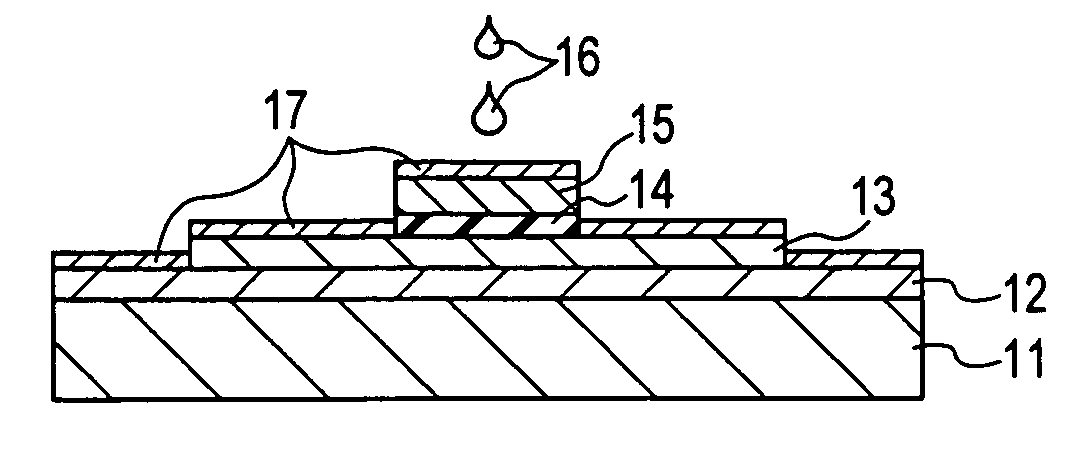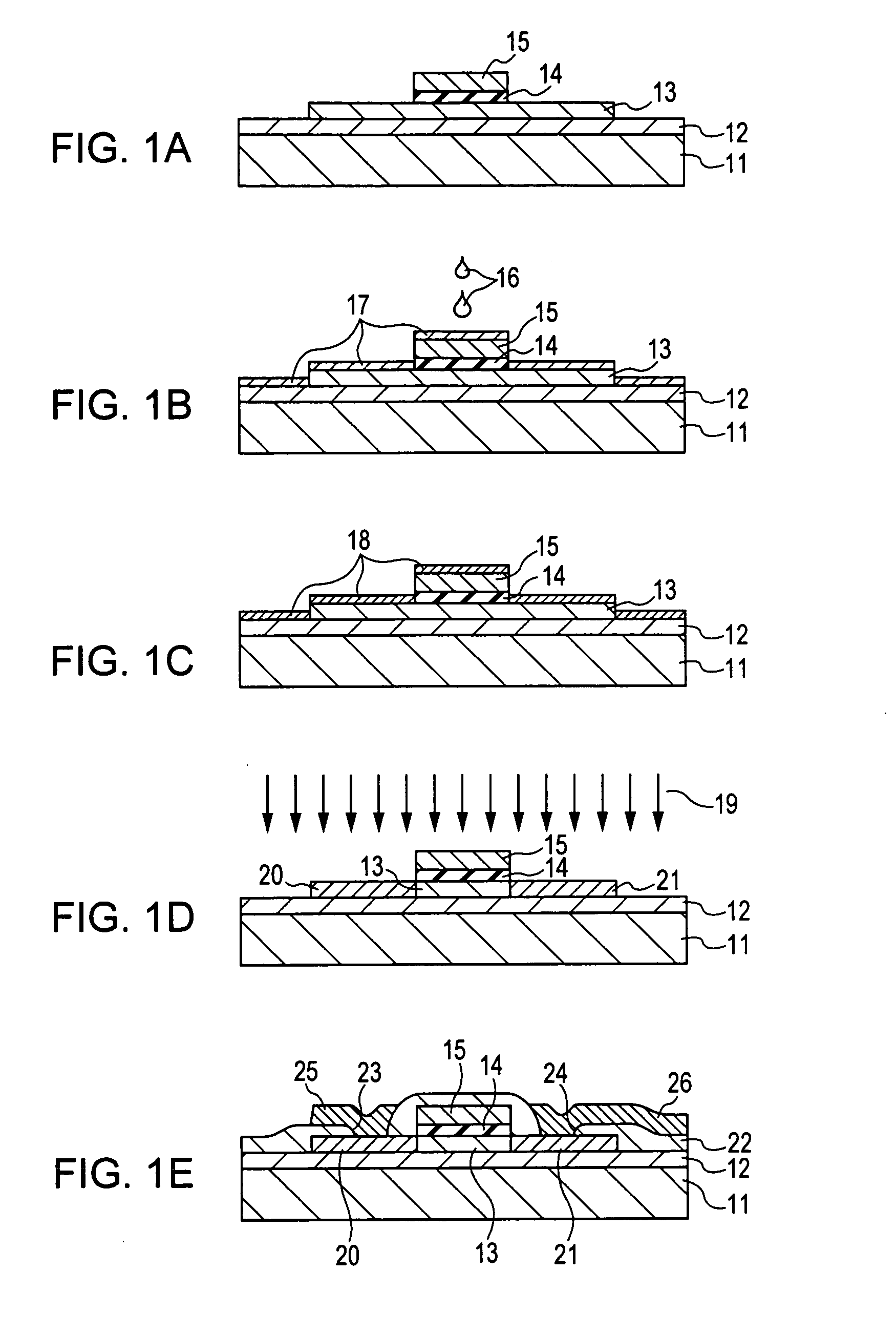Method for doping impurities, methods for producing semiconductor device and applied electronic apparatus
a technology of electronic equipment and impurities, applied in the direction of excavating, foundation engineering, transistors, etc., can solve the problems of increasing the temperature of the substrate, hardly using glass substrates with relatively low melting points for such processes, and the inability of ion implantation to apply to plastic substrates with low melting points. , to achieve the effect of reducing the amount of dopants used, reducing the burden on the human body and the environment, and reducing the contamination of the apparatus level level
- Summary
- Abstract
- Description
- Claims
- Application Information
AI Technical Summary
Benefits of technology
Problems solved by technology
Method used
Image
Examples
example 1
[0068]FIGS. 2A to 2E and FIGS. 3A to 3D each show a method for producing a silicon TFT according to Example 1 of the present invention.
[0069] As shown in FIG. 2A, a buffer layer 12 is formed on a substrate 11, and then a silicon film 13 having a predetermined shape and being composed of amorphous silicon or microcrystalline silicon is formed on the buffer layer 12.
[0070] As shown in FIG. 2B, the silicon film 13 is irradiated with an energy beam 27, such as a laser beam, so as to be crystallized.
[0071] As shown in FIG. 2C, a gate insulating film 14 is formed over the surfaces of the films provided on the substrate 11. Then, the resulting gate insulating film 14 is etched so as to have a shape slightly wider than an ultimate shape.
[0072] As shown in FIG. 2D, a layer composed of a material for a gate electrode 15 is formed on the gate insulating film 14. Then, the layer is etched so as to have a predetermined pattern, thus forming the gate electrode 15. The gate insulating film 14 ...
example 2
[0078] As shown in FIG. 4A, the film forming is performed to the step of forming a silicon film 13 having a predetermined shape as in Example 1.
[0079] As shown in FIG. 4B, a gate insulating film 14 is formed as in Example 1 so as to have a shape slightly wider than an ultimate shape.
[0080] As shown in FIG. 4C, a gate electrode 15 is formed on the gate insulating film 14 as in Example 1.
[0081] As shown in FIG. 4D, a solution layer 17 containing impurity ions is formed over, for example, the surface of the silicon film 13 as in Example 1.
[0082] Subsequently, film formation is performed from the step of drying the solution layer 17 into a compound layer 18 through the step of forming a contact plug 30 as in Example 1.
example 3
[0083]FIG. 5 is a cross-sectional view showing an example of a structure of an active-matrix liquid crystal display including a switching transistor in each pixel, the switching transistor being formed by the method for producing a silicon TFT according to Example 1.
[0084] As shown in FIG. 5, a buffer layer 12 is formed on a substrate 11 composed of transparent glass or a transparent plastic. Then, silicon TFTs 31 functioning as the switching transistors are formed with a two-dimensional array by the method according to Examples 1 or 2.
[0085] A transparent electrode 32 composed of, for example, indium-tin oxide (ITO) is formed on an interlayer insulating film 28. The transparent electrode 32 is connected to the drain electrode 26 in the silicon TFT 31.
[0086] The substrate 11 having the transparent electrode 32 is disposed so as to be remote from a transparent substrate 33 having a transparent electrode 34 and a color filter 35 provided on the transparent electrode 34. The gap bet...
PUM
 Login to View More
Login to View More Abstract
Description
Claims
Application Information
 Login to View More
Login to View More - R&D
- Intellectual Property
- Life Sciences
- Materials
- Tech Scout
- Unparalleled Data Quality
- Higher Quality Content
- 60% Fewer Hallucinations
Browse by: Latest US Patents, China's latest patents, Technical Efficacy Thesaurus, Application Domain, Technology Topic, Popular Technical Reports.
© 2025 PatSnap. All rights reserved.Legal|Privacy policy|Modern Slavery Act Transparency Statement|Sitemap|About US| Contact US: help@patsnap.com



